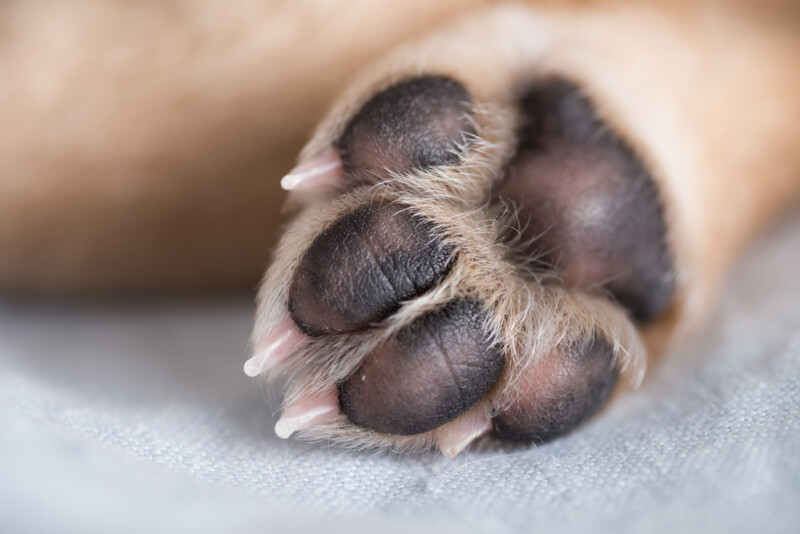Anemia is a concerning health condition that occurs when a dog has an abnormally low number of red blood cells or hemoglobin. Since red blood cells carry oxygen, anemia can greatly impact your dog’s vitality and quality of life. This article explores the causes, symptoms, treatment options, and prognosis for dogs diagnosed with anemia.
What is Anemia in Dogs?
Anemia refers to any condition that reduces the number of circulating red blood cells (RBCs) or hemoglobin, which is the protein that carries oxygen in those cells. Some key points about anemia in dogs:
- Anemia limits the body’s ability to get adequate oxygen to tissues and organs.
- It can be a primary condition or secondary result of an underlying disease.
- Severity ranges from mild to life-threatening depending on the cause and speed of onset.
- Puppies, pregnant dogs, and purebreds may be at higher risk for some anemia types.
Detecting and treating the underlying cause, if possible, is crucial when dealing with anemia in dogs.

What Are the Symptoms of Anemia in Dogs?
The most common signs of anemia in dogs include:
- Fatigue, weakness, or lethargy
- Pale gums and tongue
- Rapid heart rate
- Difficulty breathing or panting
- Weight loss
- Lack of appetite
- Cold paws, ears, and tail
- Vomiting or diarrhea
- Increased thirst and urination
In severe or acute cases, collapse, seizures, or loss of consciousness can occur. The earlier anemia is diagnosed, the better the outcome typically is.
What Are the Types of Anemia in Dogs?
There are three main classifications of anemia in dogs:
Hemolytic Anemia
This is anemia caused by the premature destruction of red blood cells. Immune-mediated hemolytic anemia is the most common type in dogs. It occurs when the immune system mistakenly attacks and destroys RBCs. Infection, drugs, cancer, and autoimmune diseases can trigger this.
Bone Marrow Disease
These types of anemia stem from issues with the bone marrow’s ability to produce a sufficient amount of red blood cells. Examples include cancer, radiation therapy, toxins, and inherited conditions.
Blood Loss Anemia
This results from blood loss, either acute or chronic. Trauma, clotting disorders, parasites like ticks and hookworms, and gastrointestinal ulcers can cause loss of blood leading to anemia.
Pinpointing the specific cause is key to properly treating anemic dogs.

How to Treat Anemia in Dogs
Treatment depends on the underlying cause but often includes:
- Blood transfusions – This can help stabilize dogs with severe or sudden-onset anemia. Compatible donor blood is given intravenously to increase red cell levels quickly.
- Medications – Steroids, immunosuppressants, and antibiotics may be prescribed to treat immune-mediated destruction, bone marrow disorders, or infectious causes of anemia.
- Supplements – Iron, folic acid, Vitamin B12, and digestive enzymes support RBC production and replacement.
- Oxygen therapy – Low oxygen masks or hyperbaric chambers provide respiratory support.
- Blood rebuilding medications – These stimulate bone marrow to produce RBCs and can be used short-term.
- Surgery – Splenectomy or removal of the spleen may help some cases of immune-mediated hemolytic anemia. Surgery can also address internal bleeding causes.
- Treating the underlying condition – This includes medications, chemotherapy, radiation, or surgery for associated illnesses leading to anemia.
With aggressive treatment of the underlying cause and proper symptom management, many dogs can achieve full remission of anemia.

How to Prevent Anemia in Dogs
Though not always possible, some tips to help prevent anemia include:
- Minimize breedings and space litters apart for females. Pregnancy strains can cause anemia.
- Prevent access to toxins like lead, onions, garlic, zinc, acetaminophen. These damage RBCs.
- Use monthly heartworm and intestinal parasite prevention medications.
- Have bleeding disorders like Von Willebrand’s disease tested for in susceptible breeds.
- Feed high quality food and avoid bones, which can cause internal punctures.
- Have pets tested annually for tick-borne illnesses. These can lead to anemia.
While not always preventable, reducing risk factors provides the best chance at avoiding anemia.

Dogs with Anemia: What is the Prognosis?
How long can my dog live with low red blood cells? The prognosis depends on the severity and cause of your dog’s anemia. With aggressive therapy, dogs can live for years with well-managed anemia. However, anemia caused by end-stage diseases like cancer may ultimately lead to euthanasia, despite treatment.
Mild chronic anemia has a good long-term prognosis when the underlying cause can be treated. Acute severe anemia requires intensive hospitalization but with transfusions and supportive care, most dogs survive the crisis period. Immune-mediated hemolytic anemia generally carries a fair to good prognosis.
Work closely with your vet to provide the needed ongoing care for your anemic dog. Follow up testing helps monitor their red blood cell levels and catch any potential relapse. With attention and patience, many dogs can still live a normal life span despite low RBCs.
FAQs
What are the first signs of anemia in dogs?
Fatigue, pale gums, rapid breathing and pulse rate, and exercise intolerance are common first signs. Increased panting may also be an early indicator.
Is anemia in dogs painful?
The anemia itself does not necessarily cause pain. However, the underlying disease that leads to it – like cancer or immune disorders – may be painful and cause discomfort.

How can I tell if my dog’s anemia is getting worse?
Increasing fatigue, deteriorating behavior, and extremely pale gums indicate worsening anemia. Lab tests showing consistently dropping RBC/hematocrit levels also signify progression.
Can a blood transfusion cure a dog’s anemia?
Transfusions are lifesaving in acute crisis, but do not cure long-term anemia. The cause of RBC destruction or loss still needs to be addressed for a cure. Transfusions buy time while initiating other treatments.
What over the counter meds help with anemia in dogs?
Never give OTC human medications. Some veterinary supplements containing iron, folic acid, B12, amino acids, and omega-3s may be recommended by your vet to support RBC health.
The Takeaway
Anemia stemming from disease, blood loss, or bone marrow disorders can significantly impact a dog’s quality of life. But with attentive care from pet owners and vets, dogs can manage anemia successfully. Work closely with your vet for prompt diagnosis and tailored treatment of your dog’s anemia type and underlying cause.



